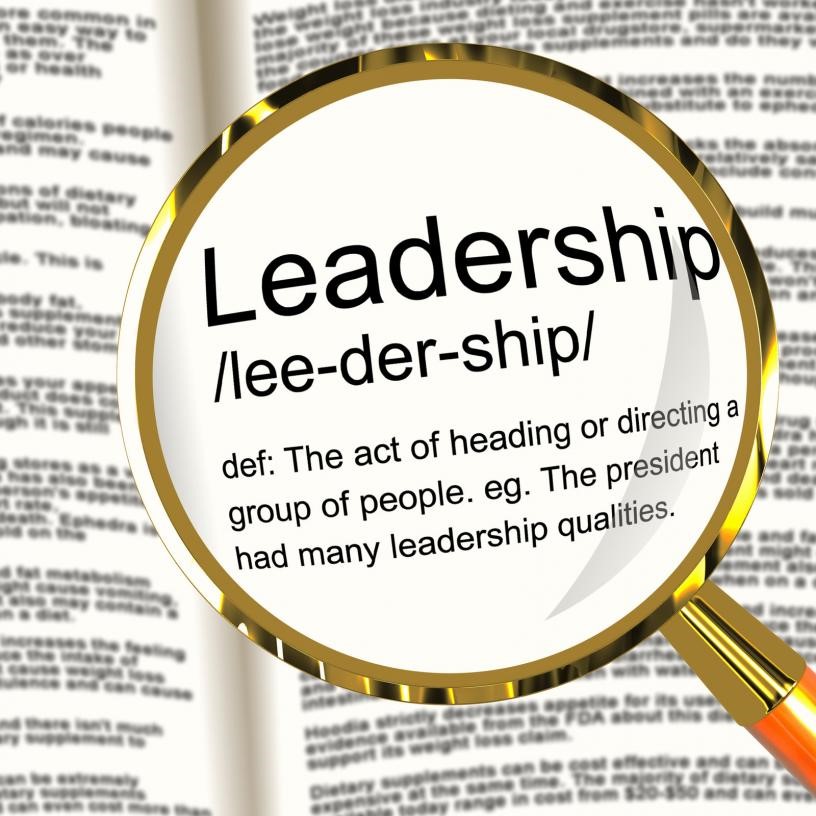Leadership Ideas!
Icebreakers: From a Bunch to a Team
Do you remember going to an event where you never left your seat or exited the event without getting to know the name of the person sitting in front of you? If yes, then the event planners may have not paid enough heed to the icebreakers!
An effective and engaging way to start a public speaking event, training sessions, and team-building activities; icebreakers are the ‘hook’ to grip an audience. Not only do they push the event off to a great start, but icebreakers also prove instrumental in getting the audience to know each other, to get acquainted with the objectives of the event, to keep them captivated throughout the proceedings and encourage their participation to the purpose of the event, which contributes to a successful outcome.
When should icebreakers be used?
Just as the name suggests, they should be used whenever you need to “break the ice” within the audience at an event or a meeting. An icebreaker is often used when people from different professional or cultural backgrounds, who may possibly not know each other at all, meet for a common purpose. The icebreaking activities should aim to quickly bond the people towards the event goal, uplift the comfort levels in a newly formed team, throw hints about the upcoming topics of the session, and get the facilitator, or the speaker, and the participants to know each other better.
What to use and where?
An icebreaker activity designed to kick start a high school motivational talk, would be certainly different from one targeted at a professional audience. Make sure to design the activity that is appropriate to the target audience and pertinent to the objective of the meeting. While a Human Bingo may offer a mighty kick off to a student’s networking event; beginning with a short quiz or by stating some relevant news or facts may be more suitable for professional environments. Some popular and effective icebreakers include:
A ‘Raise Your Hand’ round:
This versatile activity works well for any event, corporate or casual, and stimulates the energy level as the audience raises their hands in response to different questions or audience polls.
The Hook:
Start a story but don’t finish it! As your audience gets captivated by the events, stop by saying, “I’ll get back to this towards the end.” This will keep them engaged till the end of the session.
Two Truths, One Lie:
An interactive activity for introduction, this generally works well with smaller groups but can also be effectively employed by selecting random participants to discreetly tell three facts about themselves, of which two should be true and one a lie. The audience keeps guessing the lie in a poll until the participant reveals it.
Brainstorm and Problem Solving:
Tried and tested, these universal icebreakers can either be used to start an event or in the middle, to boost the energy level and creativity of the participants. Get the group organized into smaller teams and assign a simple problem scenario for them to brainstorm and work out in a short time. Each group should then be asked to present their solutions to the other teams. This activity can be used to potentially go through multiple topics in a short span of time.
When designing your icebreaker, it is important to remember that while a good icebreaker can make a successful event, a poor one can break the entire tempo. While activities may always come in handy to mobilize the audience and keep them keyed up, starting off with a joke or an interesting quote may also work as an effective icebreaker to give your audience a promising impression of the event.
What Makes a Great Leader?
When you feel that resources are tight, stress levels are running high, your visions of success are blurring out and nothing seems to go according to your plan, you may find yourself easily giving up as a leader and watching your team sink. Take a deep breath, calm down, remind yourself of your leadership aspirations, and re-emphasize on these key qualities that make a great leader:
Honest and Committed
A true leader makes an exceptional leader, period. If you think a certain leader is great because he hid their latest loss from her team, or lied to them about why they underperformed on a certain task, you may want to reconsider. A leader’s team is a reflection of her own morals, so she needs to demonstrate an honest and ethical behavior to expect her team to follow suit. By implementing these values, an exceptional leader commits to ensure that all her teammates are on the same page of standards, and induces a professional and healthy environment to work in.
Farsighted and Expressive
The bleak difference between a good and a great leader is her farsightedness and self-expression. Setting a clear vision of future strategies and performance, and effectively communicating it to the team provides them with a sense of direction and effectively provides employees with an understanding of their roles, responsibilities and conduct. A great leader always stays a step ahead of time and tends to forecast her team’s future success and pitfalls in order to prepare and act accordingly, while taking her team into confidence and keeping them updated with any future plans and strategic changes.
Inspirational and Motivating
Ever been in a situation where you lost all hopes of being successful and needed someone to look up to for inspiration? A great leader does just that! Like a captain goes all out to rescue his sinking ship, a true leader stays composed through adverse situations to keep the team spirits high and boost their morale. Reminding the team members of their achievements uplifts their self-motivation and encourages them to aim higher and perform at a next level.
Confident and Demonstrates a Positive Attitude
There may be nothing worse than being led by a pessimist. A leader has to display a positive attitude in order to steer her team into the right direction. Keep your confidence level high, and reassure everyone that hindrances are normal, and to maintain their focus on the ultimate goal. A calm and confident leader keeps her team from feeling overwhelmed under pressure. Observe a certain level of damage control, reinforce the positivity into your team, and become an exceptional leader by keeping everyone working and moving forward.
Creative and Humorous
While these two qualities may rank last on the list, they are equally essential to have to be an inspirational leader. While a leader’s creative flair can make or break her team, humor makes her see the lighter side of things during a crisis and as your team takes the cue from you, it will keep their moods uplifted and expectations high. As a leader, many of your decisions may not be clear-cut and might force you to be flexible around your set course of action and step out of your comfort zone. Creativity becomes vital in such situations and enables a leader to think outside the box and weigh her choices before arriving at a final decision.
Excellent Interpersonal Skills
You may have the best qualifications and the most comprehensive work experience on your CV, but if you are unable to get along with your colleagues or fellow students, you may not be able to go far! How your coworkers see you heavily depends on your interpersonal communication skills, and can have a long-term impact on your career possibilities as well as your routine life. Read on to find out some effective tips to strengthen your social skills and make better connections with your team mates.
Be a sensible and effective speaker
To have your opinions valued, it is important that you weigh your words and thoughts before voicing them out. Intelligence and maturity are the secret ingredients to achieving exceptional communication skills. Avoid revealing the first thought that crosses your mind, without contemplating, to avoid misunderstandings and misperceptions with your peers.
An effective verbal communication is all about clarity. Slow down and speak more considerately, avoid impulsive responses to questions, and pause for a while to digest the conversation before offering your opinions. Stay calm and focused, speak politely and just follow basic professional ethics, and all should be well!
Your thoughtfulness and sensibility can take you a long way in being taken seriously, and so can a splash of vigilant humor. You may have already noticed that the funny guy in your office, or classroom, is also quite popular. As long as you keep off inappropriate humorous remarks, or offensive jokes, you will be able to ease out communication barriers with a timid peer or a grumpy manager!
Be a good speaker, but a better listener
It may be a lost virtue, but active listening is vital for great interpersonal skills. In addition to being an audience to your words, your coworkers would want to be heard and understood too. Make sure you recognize others’ perspective and demonstrate a basic understanding of their viewpoints. Try repeating what the speaker has said to express your attention and feel more connected.
Effective verbal communication has to be two-sided. Be prepared to listen to your colleagues with an open mind and concentration, and avoid emerging as distracted, judgmental, and disrespectful towards their point of views. To be approachable and favored, treat other speakers with the same dignity and importance as you would like for your own words.
Positive attitude, happy face, and considerate nature
Non-verbal communication provides the foundation for efficient verbal communication. Maintain a confident body language, be courteous and supportive, and most importantly, don’t be a whiner! Your constant smile can become your identity at your workspace, and your considerate nature can make you the most favorite employee among your colleagues. Get into a habit of writing positive appreciation notes to your coworkers; celebrate even the pettiest of achievements; remember their birthdays and important evens; always wear a cheerful outlook, and never hold back praises and thank-you. By representing a caring and courteous demeanor, you will have the same feelings reciprocated towards you.
Stay aware of your surroundings and focus on self-management
How effective your interpersonal skills are, basically depends on how well you manage your anger, frustration, mood swings and other emotions. Focus on self-management and maintain a calm and composed outlook at work and school. Be compassionate to a struggling coworker, avoid laughing in tense situations, and most importantly, keep a tap on your own emotions to be empathetic to others.
Be assertive yet open to constructive feedback
While it is important to always be polite and respectful, it is also essential that you demonstrate a certain level of assertiveness to get your point across and well-taken in a competitive environment. However, it is vital that you don’t come off as being rude or offensive. It is completely normal to defend your ideas with confidence, but remember to keep aggression at bay. Keep you volume and tone under control, choose appropriate words, and be tactful enough to emerge out of the situation respectably.
At times, your opinions may meet criticism and opposition, but there’s a reason why they are called opinions and not facts! Avoid taking criticism and negative feedback personally and remain flexible around your set course of action. There may be other better ideas than yours, accept them with an open mind to maintain a professional and persevering character.
Leadership Game | Back To Back Drawing Student Leadership Game
Leadership Game | Back To Back Drawing Student Leadership Game
© Russ Peak | Leadership Has Never Been This Fun! | Leadership-Ideas.com
[divider height=”30″ line=”1″]
Description
In this student leadership game, your students will learn the importance of clear communication as they pair up back-to-back and attempt to re-create a drawing with only limited verbal instructions.
Purpose
This activity teaches effective communications skills. It emphasizes the importance of giving clear instructions when presenting your ideas. Whether giving instructions to a teammate, presenting your student council election speech, or advertising the next school dance… the presence of clear and specific directions will ensure the success of your student leadership efforts.
Group Size
Any
Materials Required
A Pad of paper and pencil for each pair of players
Shape drawings (Download & Print this PDF with Shapes)
Optional – Use a dry erase board for writing participant’s key point answers and “a-ha!” moments during discussion.
Time Required
15-30 minutes
[divider height=”30″ line=”1″]
INSTRUCTIONS
Get Ready & Explanation
- Divide your group into pairs.
- Instruct each pair to sit on the floor back to back.
- Give one person in each pair a pencil and pad of paper.
- Explain that the player holding the picture will give verbal instructions to their partner on how to draw the shape – without actually telling the partner what the shape is.
- Show your group the drawing of the square and explain:
“You may not simply say, ‘Draw a square!’ Or even ‘Draw the shape of SpongeBob’s body.’”
“Instead, you will give step-by-step directions.”
“For example: If this were describing the SQUARE, I’d say…”
“Draw a line horizontally across the page.”
“At the end of the line you just drew, draw a line going down the page… Etc.”
Note: Don’t complete the whole drawing or get too specific in your drawing example. Let them figure that out themselves. Discard the square.
Play The Game
- Pass out a shape to the paired player who does not have the pencil and pad of paper. Make sure to only let the direction giving player see the shape.
- “Go! Artists… no looking!”
- When the drawing is complete. Ask each pair to compare their original shape with the actual drawing.
- Play this game 3 or 4 times allowing the pairs to see the outcome of their drawings. Pass out a different shape each game and allow pairs to switch who is the communicator and who is the drawer.
[divider height=”30″ line=”1″]
DISCUSSION IDEAS
 During the first round, how well did the direction giver describe the shape? How well did the second person interpret the instructions?
During the first round, how well did the direction giver describe the shape? How well did the second person interpret the instructions?- Were there problems with both the sending and receiving parts of the communication process?
- What did you do to improve the communication process? What was the result?
- Have you experienced a situation where bad communication was an issue? What happened? How could have more direct communication have helped?
- What can we learn from this in our attempts to reach out to our campus and community as leaders?
- Is there anything we are currently doing as student leadership that could be improved with better communication efforts?
[divider height=”30″ line=”1″]
COMMENTS
- Use basic shapes for the first couple of rounds. Switch in the more difficult shapes as your student leaders catch on.
- Remember, like many team-building and student leadership games, this in not just a quick game in route to an object lesson. This game actually is great practice in developing these invaluable student leadership skills. Incorporate this and other leadership skill building games into your leadership or student council class on a weekly basis.
- Ideas stick better when accompanied by a personal example. Your student leaders will gain greater retention of your discussion points when they accompany their basic answers with an example or descriptive story, hypothetical or real, that involves how they have or will use their leadership skills in a personal away. Encourage this sort of response and ask follow up questions.
- New at leading group games? Check out this article that explains the simple secrets that will leave you leading games like a pro! Playing With A Purpose: Simple Secrets To Student Leadership Games That Teach And Inspire
• • • •






